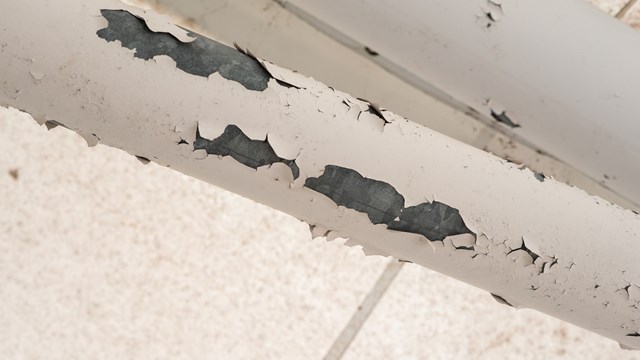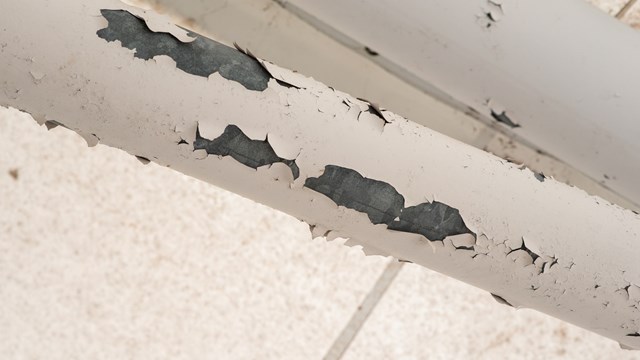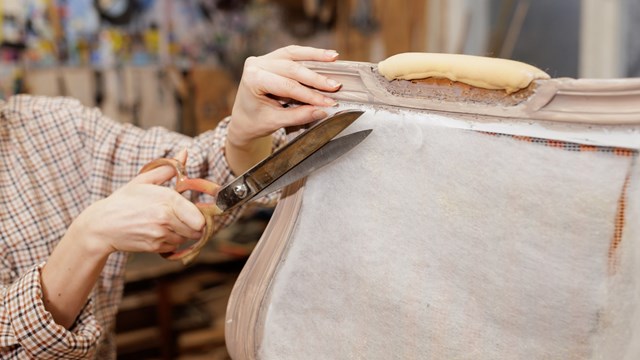
When you’re decorating your home, there are two things you want to bear in mind if you have children. You want to keep the design functional, but safe. After all, anyone who’s ever had, or just looked after, a baby or toddler, can tell you that little kids have an uncanny knack for finding things and getting into places they shouldn’t. It’s a parent’s and caretaker’s responsibility to keep an eye on your child, but it helps to have your home as safe as possible in each and every room.
Kid-friendly rooms does not mean that a room's design has to be dull or boring. You can still have a stylish home without sacrificing safety. To start, consult with an interior designer who has experience in designing rooms for children. When Donna Webster, licensed interior designer of Web Decors in Algonquin, Illinois, meets with a client who has children, she makes certain to ask the child’s age. “If I’m designing a home and they are grandparents, I ask them if they babysit a lot,” she says.
This helps Webster understand exactly what safety features she must include in the home for that child. In most cases, making certain what kinds of drapes and blinds are a priority when designing a room for almost any child.
“Children have died because of mini-blind cords, so there are now laws protecting children,” says Webster, who makes sure to provide notice about safety information to her clients through her newsletters.
The U.S. Consumer Product Safety Commission (CPSC) has received reports of five deaths and 16 near strangulation with Roman shades since 2006 and three deaths in roll-up blinds since 2001. According to The Window Covering Safety Council, cordless window products offer the safest option and they recommend that owners and renters replace all corded window coverings in the home made before 2001 with today’s safer products. Repair kits are also available.
No Fly Zone
Children dream about flying like Peter Pan or Superman, so it’s important to protect them in case they want to try out their imaginary wings. You want to make certain that beds and other furniture that children can climb on are kept away from windows.
According to The National Safety Council, a child can fall from a window that’s open only a few inches, so make certain that your windows are guarded and secure enough that your child cannot topple out. The CPSC estimates that over a dozen children under age 10 die each year from toppling out of windows, and more than 4,000 others are treated in hospital emergency rooms for window-fall-related injuries. Fortunately and unlike many other cities, New York City residents are required to have window guards. The New York City Health Code expects owners of buildings with three or more apartments to provide and properly install window guards on all units in which children under the age of 10 reside.
If you’re concerned about having your windows blocked in an emergency, the American Society for Testing and Materials (ASTM) established voluntary safety standards for window guards that ensure guards designed for single-family homes, or the lower floors of apartment buildings, have simple emergency-release mechanisms for use in the event of a fire.
Interior designers must also take extra special care when decorating for a pre-1978 home, which may have lead paint. In 2009, 88 percent of New York City children affected with elevated lead blood were younger than six years old. Lead poisoning can reduce intelligence, shorten attention span, cause learning disabilities, health problems and affect a child's behavior.
If painted walls are disturbed by a designer, by scraping, sanding or burning, high concentrations of lead are released into the air and inhaled. Because lead can cause a host of health problems in children and adults, there are laws regarding the proper removal of the substance, as well as required disclosures that must be followed.
Because lead-based paint is the leading cause of lead poisoning, New York City law requires that owners of multiple buildings conduct an annual analysis and repair paint hazards in apartments with children less than seven years of age.
Since little ones are always exploring a home, Kathy Hoffman, ASID, LEED GA, interior designer at Susan Fredman in Chicago, suggests organizational storage spaces that keep children out. “Keep these areas locked, but think about how you use the area too,” she says. “For example, with a bathroom, you’ll want to put hooks for robes and towels so you don’t have to leave a child in the tub to get these items. Hand-held showers are also helpful.”
Changeable Spaces
It’s important to remember that designing a kid-friendly interior means that you’ll change your design several times to meet the needs of your growing child.
“With an infant you’re worried about safety and with a toddler you’re designing with safety in mind, but you want them to have interesting spaces that get their attention,” says Hoffman. “I’ve designed a lot of homes where the family has a safe play space for the child.”
Hoffman also designed rooms that serve a double purpose. “Offices and playrooms are combined in some homes,” she says. “There are desks so the parents can do their work and the children can play.”
Then when little ones grow out of toddlerhood, the baby gates are taken down and the safety locks come off, Krista Fabregas of KidSmartLiving.com says that it’s natural for parents to breathe easier, but don’t get too comfortable! “Transforming nurseries into “big kid” rooms can add a new set of safety concerns, but they’re easily overcome,” she writes in her blog on her site.
To accommodate “big kids” growing needs safely, she suggests keeping beds away from windows, making closets kid-accessible and keeping breakables out of their room. She also recommends Quake-Hold Putty to keep items you do put in their room safe.
Although most parents design the room with their baby in mind, Stacey Cohen of Stacey Cohen Interiors in Chicago, suggests thinking backwards. "I would look at the end use and layer backwards,” she says. “Purchase pieces that can be expanded upon and have multi-functional uses."
Rooms that convert from baby use to that of an older child are extremely versatile and save money. “The room should be flexible enough to grow with them,” says Marita Alfonso, a senior associate at Lichten Craig Architects in Manhattan. “Furniture in this aspect, is a non-permanent item, and can always be switched out.”
Parents may also consider investing ahead—buying pieces now that can be used in the future, Alfonso says. “We are working with a young couple now that has a two-year-old and a newborn. Each child will in the future have their own rooms. In designing these rooms, we are currently adding built-in work stations (desks with filing drawers, pencil drawers, and fixed bookshelves). In only a few years, the two-year-old will be doing her homework while sitting at her desk.”
Space for teens also needs to be about function, more than about space. “If you’re short on space, you can use built-ins, such as a wall unit for a desk with a bed above it,” says Nora Schneider of Nora Schneider Interior Design in Chicago. “Teens are also transitioning. For example, girls may not want pink anymore.”
When it’s time to transition, Schneider suggests simply updating a few things in the room. “You can change colors and linens or add a mirror over a dresser,” she says.
A good design is not only functional and safe, but it’s healthy too. “Health has become a safety issue too,” says Hoffman. “A de-cluttered home prevents dust and mold growth, which contribute to allergies and asthma.”
She says she also incorporates center vacuum systems that play a part in improving the air quality of the room and makes sure to design using fabrics, rugs and paint that are low in or have no volatile organic compounds, or VOCs. VOCs are the odors you smell from paint. These fumes can trigger serious health reactions in those who inhale them.
“Adding air filtration to help manage the air quality in the home plays a part in the things we finish,” she says. “We also educate our client on what’s possible for health considerations. For example, we don’t recommend wall-to-wall carpet because of the dust. We recommend organic mattress, fabrics, bedding, keeping the chemicals and dyes away from the skin.”
“Also take into consideration custom bedding for a child’s room,” says Webster. “You should use fabrics that you can throw into the washer. We also discuss allergies. There are fills for pillows and bedding that’s antimicrobial.”
All in all, you should design with comfort in mind, but remember that the safety of your building’s children should always come first.
Lisa Iannucci is a freelance writer and a frequent contributor to The Cooperator. Editorial Assistant Maggie Puniewska contributed to this article.









Leave a Comment